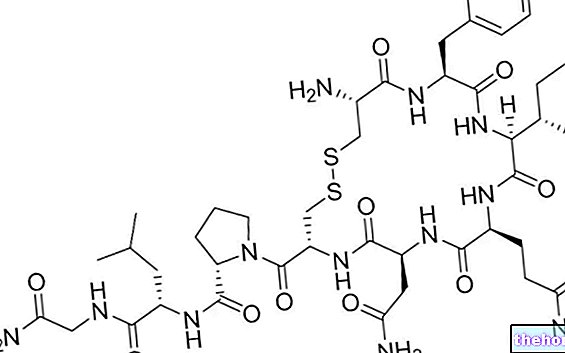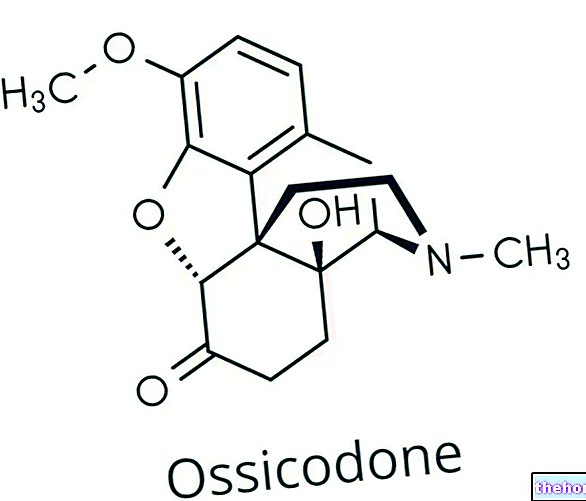
What is Xyrem?
Xyrem is an oral solution that contains the active substance sodium oxybate (500 mg / ml).
What is Xyrem used for?
Xyrem is used to treat narcolepsy with cataplexy in adult patients. Narcolepsy is a sleep disorder that causes excessive daytime sleepiness. Cataplexy is a symptom of narcolepsy characterized by "sudden muscle weakness caused by strong emotions such as anger, fear, joy, laughter or surprise. Sometimes cataplexy can cause falls.
Because the number of patients with narcolepsy is low, the disease is considered 'rare', and Xyrem was designated an 'orphan medicine' (a medicine used in rare diseases) on 3 February 2003.
The medicine can only be obtained with a special prescription.
How is Xyrem used?
Xyrem therapy should be initiated and administered under the guidance of a physician experienced in the treatment of sleep disorders. Due to the potential abuse of sodium oxybate, the physician must
evaluate patients with a history of drug abuse.
The dose is 4.5 to 9 g per day, divided into two equal doses. The maximum daily dose is 9 g. The recommended starting dose is two 2.25g (4.5ml) doses per day. The dosage can then be adjusted at one to two week intervals based on the patient's response. In patients with liver problems the starting dose should be halved. Patients with kidney problems should follow a low sodium diet. Patients being treated with Xyrem should avoid the use of alcoholic beverages, as alcohol may enhance the effects of the drug.
Xyrem is supplied with a graduated measuring device and a measuring cup. Before taking, each dose of Xyrem should be diluted in water. The first dose of the day should be taken before bedtime, at least 2-3 hours after a meal. The second dose should be taken 2.5-4 hours later. For more information, see the package leaflet.
How does Xyrem work?
The active substance in Xyrem, sodium oxybate, is a central nervous system depressant. The precise mechanism of action of sodium oxybate is not yet known, but it is believed that this substance binds to specific receptive molecules present on the surface of some brain cells. In this way it induces changes in brain activity, favoring slow-wave sleep. (delta) and stabilizing night sleep. When taken before bed, Xyrem increases deep sleep and the duration of sleep at night, thereby decreasing the number of sleep attacks during the day. This improves the symptoms of narcolepsy.
How has Xyrem been studied?
The effects of Xyrem in narcolepsy with cataplexy were examined in 707 patients in four studies. In all studies, Xyrem was given at a daily dose of 3 to 9 g and compared with placebo (a dummy treatment). The first study (136 patients) looked at the effects of Xyrem on the number of cataplexy episodes during 4 weeks of treatment. The second study, conducted in 56 patients treated with Xyrem for at least 6 months, compared a group of patients who continued treatment at the established dose with a group who switched to placebo instead. The study measured the number of cataplectic episodes over a 2-week period. The other two studies (516 patients) looked at the effects of Xyrem on excessive daytime sleepiness and other symptoms of narcolepsy, both alone and in combination with existing therapy. by the patient (modafinil: a stimulant used in the treatment of narcolepsy). The main measure of effectiveness was the change in daytime sleepiness.
What benefit has Xyrem shown during the studies?
Xyrem was more effective than placebo in reducing symptoms. In the first study, the daily dose of 9 g reduced the number of cataplexy episodes by 16.1 (from 23.5 to 8.7) per week compared with a decrease of 4.3 per week in placebo-treated subjects. The second study showed that Xyrem continued to prevent cataplexy attacks after long-term treatment: over 2 weeks, the number of episodes that occurred in patients who continued treatment with Xyrem remained unchanged, while in subjects who were switched to placebo there was an increase of 21.0. Xyrem also reduced daytime sleepiness in both patients who continued to take modafinil and those treated with Xyrem alone.
What is the risk associated with Xyrem?
The most commonly reported adverse reactions with Xyrem (in more than 1 in 10 patients) are dizziness, headache and nausea. Nausea is more common in women than in men. Xyrem can also cause respiratory depression (inhibition of breathing). For the full list of side effects reported with Xyrem, see the Package Leaflet.
Xyrem must not be used in people who may be hypersensitive (allergic) to sodium oxybate or any of the other substances. It should also not be taken by people with 'succinic semialdehyde dehydrogenase deficiency' (a rare metabolic disorder) or by people being treated with opioid drugs (such as some pain relievers) or barbiturates (for example, some anesthetics and medicines used to prevent seizures). Due to the abuse potential of sodium oxybate, physicians should carefully evaluate patients receiving Xyrem.
Why has Xyrem been approved?
The Committee for Medicinal Products for Human Use (CHMP) decided that Xyrem's benefits are greater than its risks for the treatment of narcolepsy with cataplexy in adult patients. Although the 9 g dose was the most effective, high levels of adverse reactions were observed with this dose, so the Committee recommended a starting dose of 4.5 g per day. Since the effective dose is close to that at which side effects become severe, dose increases should be made strictly under the supervision of a physician who specializes in the treatment of sleep disorders. The committee recommended the granting of a marketing authorization for Xyrem.
What measures are being taken to ensure the safe use of Xyrem?
The company that makes Xyrem will reduce the risk of drug abuse by providing educational materials to healthcare professionals and patients, strictly controlling the distribution of the drug and monitoring its use.
Other information about Xyrem:
On October 13, 2005, the European Commission granted UCB Pharma Ltd a "Marketing Authorization" for Xyrem, valid throughout the European Union.
For the summary of the opinion of the Committee for Orphan Medicinal Products for Xyrem, click here.
For the full version of the Xyrem EPAR, click here.Last update of this summary: 02-2007
The information on Xyrem - sodium oxybate published on this page may be out of date or incomplete. For a correct use of this information, see the Disclaimer and useful information page.




























